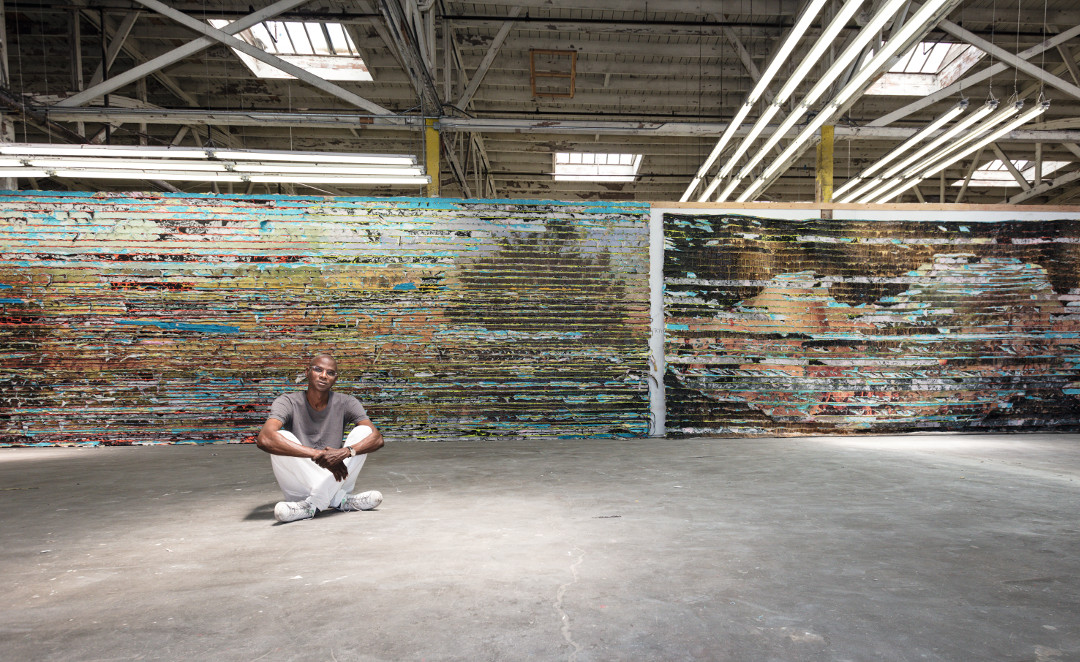
Mark Bradford’s tribute to Jack Whitten
The abstract artist includes a fitting homage to the painter, who died back in January, in his new Los Angeles show
The late Jack Whitten made abstract works that still managed to say something concrete about social conditions in America. As we explained in our recent contemporary painting survey Vitamin P3, Whitten's later works, completed prior to his death at the age of 78 in January, were predominantly black and silver.
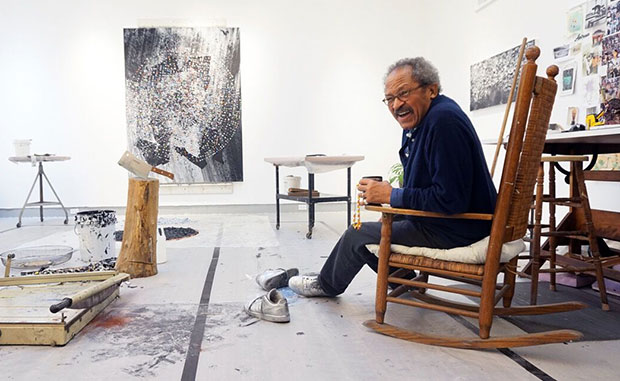
“This blackness summons Whitten’s history as an African-American artist born and raised in a coalmining town in the segregated South,” explained curator Veronica C. Roberts in Vitamin P3, “while also invoking starry night skies and invented cosmoses. Suggesting landscapes that have been reduced to rubble and then rebuilt, they collapse the past and the future.” You can read more from Whitten himself in his Why I Paint interview, one of the last he conducted.
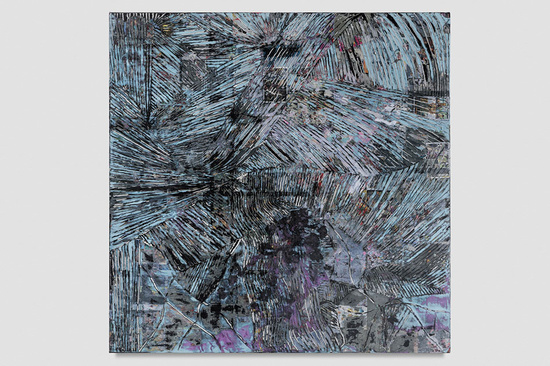
In this final respect, Whitten’s works have much in common with fellow US abstract artist Mark Bradford As critic Sebastian Smee explains in our forthcoming Mark Bradford book, the artist’s huge, collaged works recall "the half-planned, half-organic sprawl of cities seen from above. They embody – or really enact – a dynamic of urban flux and of creative destruction."
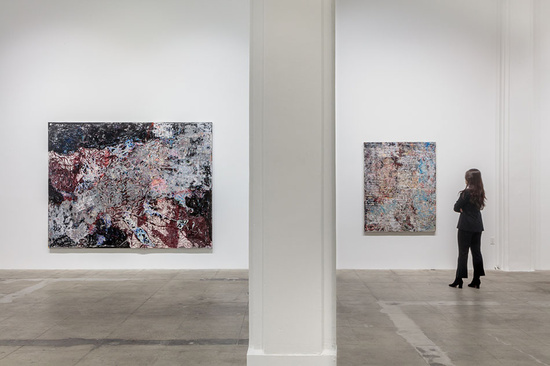
Bradford’s current show at Hauser & Wirth in Los Angeles features 10 new works created, in part, from layers of printed material – including billboards, merchant posters, newsprint, comics, and magazines – the artist gathers from a variety of sources around his home in LA.
Quite a few of Bradford’s new pieces actually draw their titles from comic book speech bubbles, such as 'Tonight… we feed!’, ‘I heard you got arrested today’, and the wonderfully malevolent ‘You’re going to regret this when I catch you, you little shit’.
However, one piece has a more straightforward name. Moody Blues For Jack Whitten is, as the gallery puts it “a composition of rhythmic lines and shades of blue that Bradford initiated before the death of his friend Jack Whitten, and completed for this exhibition.
{media3}
Bradford recently talked to the Los Angeles Times about the exhibition and Whitten. “I met Jack’s work through the pages of very obscure art journals and through a few artist catalogs here and there," he said. "I was trying to find other African American abstract painters besides Norman Lewis. I saw Jack as this kind of incredible statesman. He’d say, ‘Mark, it’s about the work.’ He would always go to the studio and make work.
"He was uneven like every good artist. But what I saw was a man who was completely interested in the journey and the process of making abstract paintings." Bradford added that he got to know Whitten when he came to Hauser & Wirth. "It was comforting because I could look at a lineage. There stood a man who was African American and an abstract painter.”
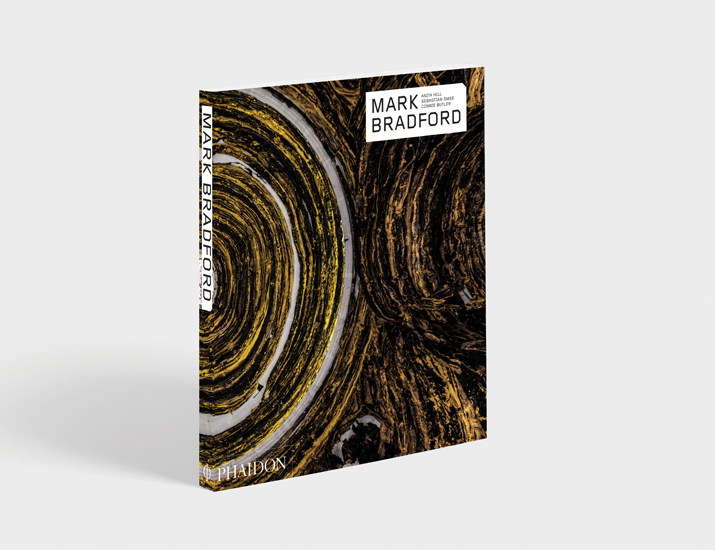
For more on Bradford’s socially engaged abstraction order a copy of this book; for more on Whitten’s work and much else besides, get Vitamin P3.